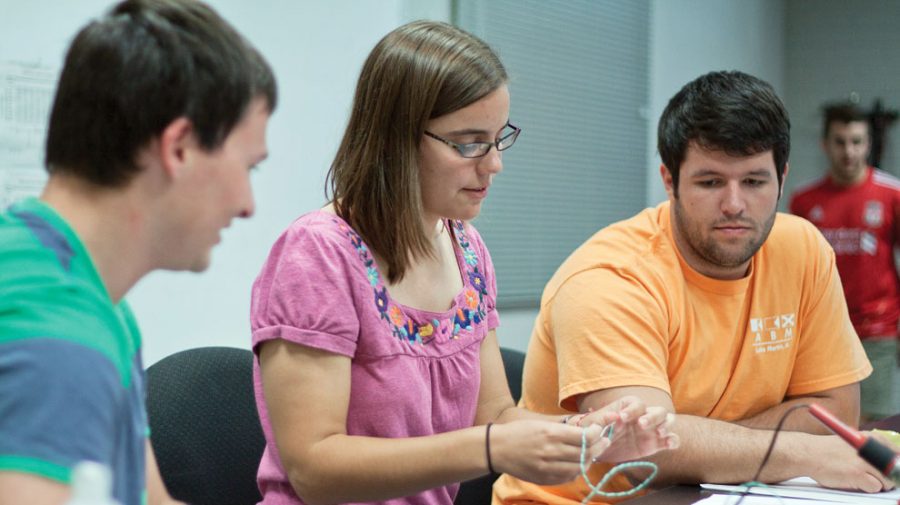At the University of Alabama, in any given class of 50-60 engineering students, as few as five female students will be present. The female demographic is hardly represented, but the gender imbalance is steadily lessening.
The Society of Women Engineers (SWE) is one example of a group on campus attempting to foster interest in technical fields. SWE regularly hosts events to promote this cause.
Allyson Golden, a senior majoring in mechanical engineering, is a member of SWE.
“I was co-chair for two semesters,” Golden said. “We hosted regular exam review sessions, and I was in charge of coordinating with professors who would hold the sessions and planning lunch and the sessions themselves.”
Golden said she decided to major in engineering partly because of a family history in engineering.
“I also liked math and science in school, and when I researched engineering, it looked like a job that fit my interests and in which I could easily get a job,” she said.
Golden said she is also involved with E-Day, an event hosted by UA each year that focuses on high school students who are looking at majoring in engineering. At the event, potential engineering students acquire different perspectives about the occupational requirements of engineering. The event also serves to educate students about the different opportunities for both genders and all ethnic groups.
According to Mary Frank Fox’s study titled “Women in Scientific Fields: Doctoral Education and Academic Careers,” which was written in 2004 but contains results from research done in 1997, only 6.5 percent of doctoral scientists and professors in engineering fields were female at the time of the study. While this percentage has surely risen in recent years, the gender divide is still great.
“In 1997, 80 percent of women employed in science and engineering fields were in psychology, social sciences, and life sciences,” the study said. “In 1973, women were 4 percent of the professors across scientific fields; in 1987, the proportion was 7 percent; in 1993, 10 percent; and in 1997, still just 11 percent.”
Golden has one explanation as to why such a divide exists.
“I think there is a certain stigma attached to engineering,” she said. “Women think, ‘Oh, that’s a guy job,’ and that’s a tough major that requires skills that men are more apt to have, but that’s not always true.”
Golden said the University has taken noticeable steps to open the engineering school to less-represented groups, even in the time she has been a student.
Ray Davis IV, a junior majoring in finance and economics, works with engineers through his job.
“Honestly, my estimate of the gender ratio in my work environment would have been 60:40, with more women in the 200 or so employees,” Davis said. “I think this was because of the type of work we did in the company. The engineers worked with cars and had to be very skilled with hands-on issues and had to possess an artistic mindset in order to do the work well.”









